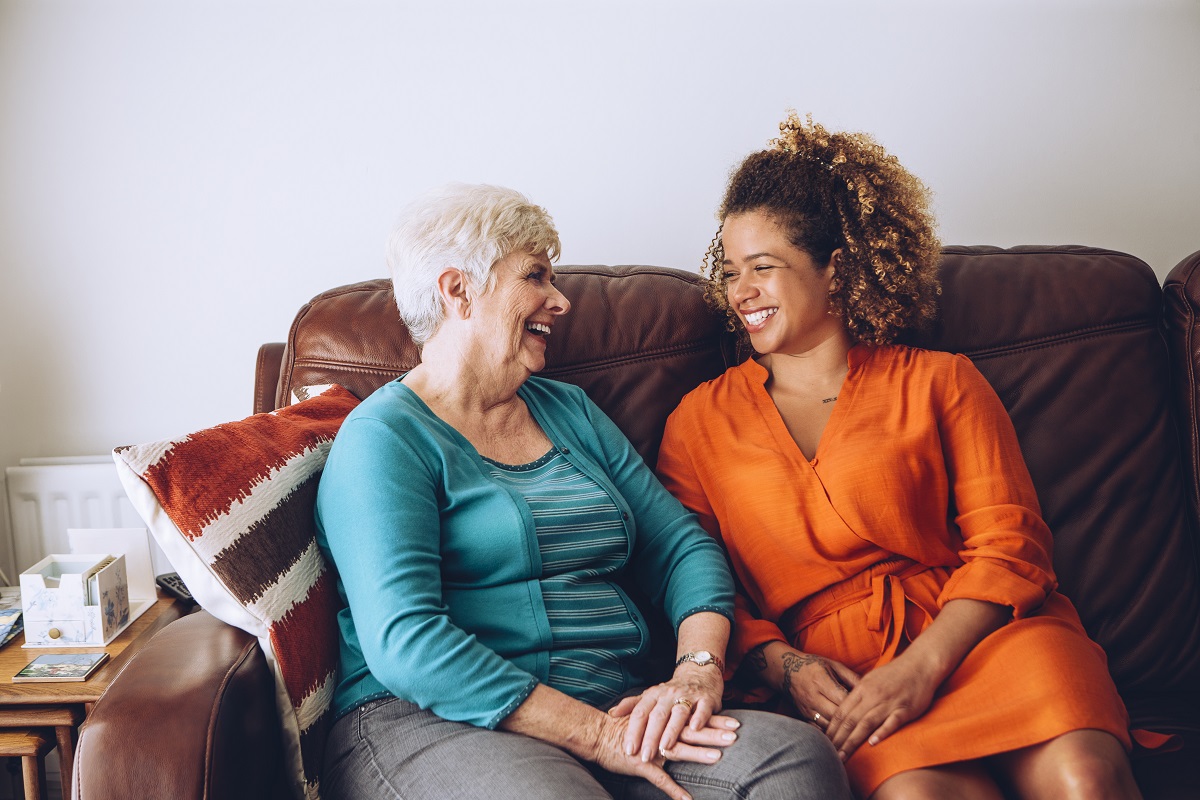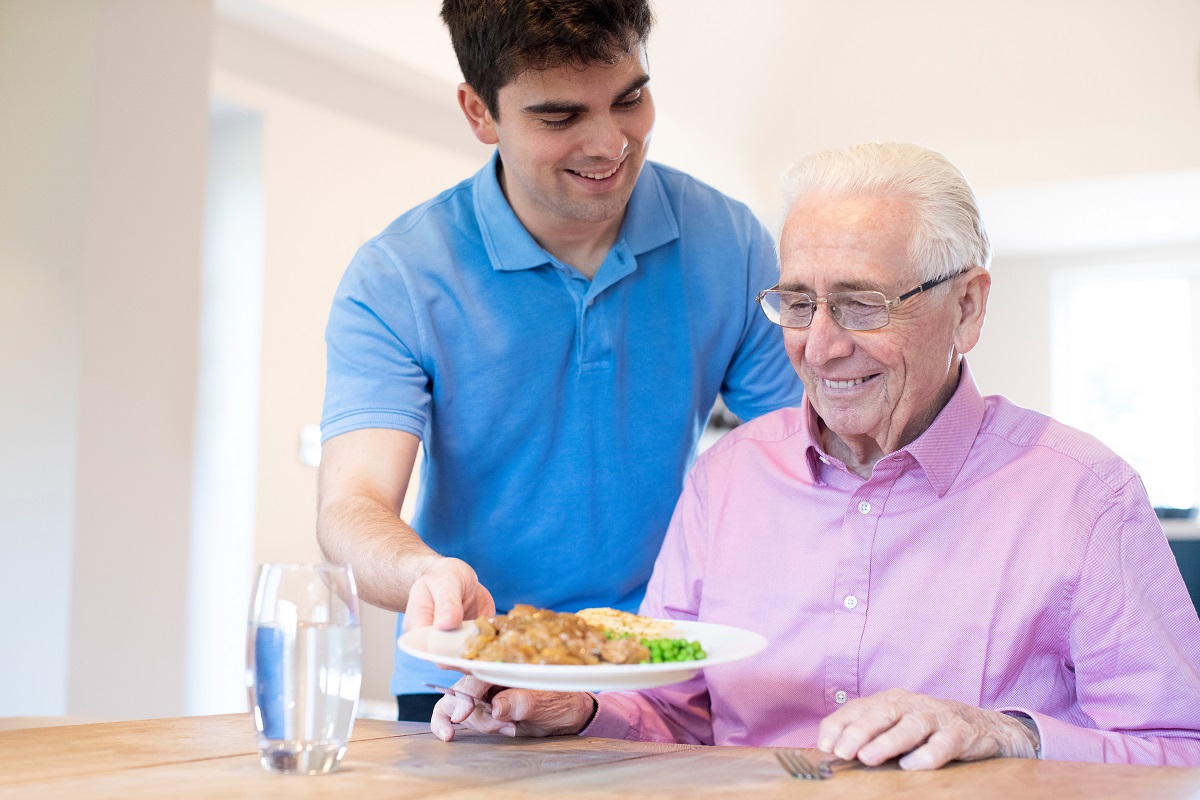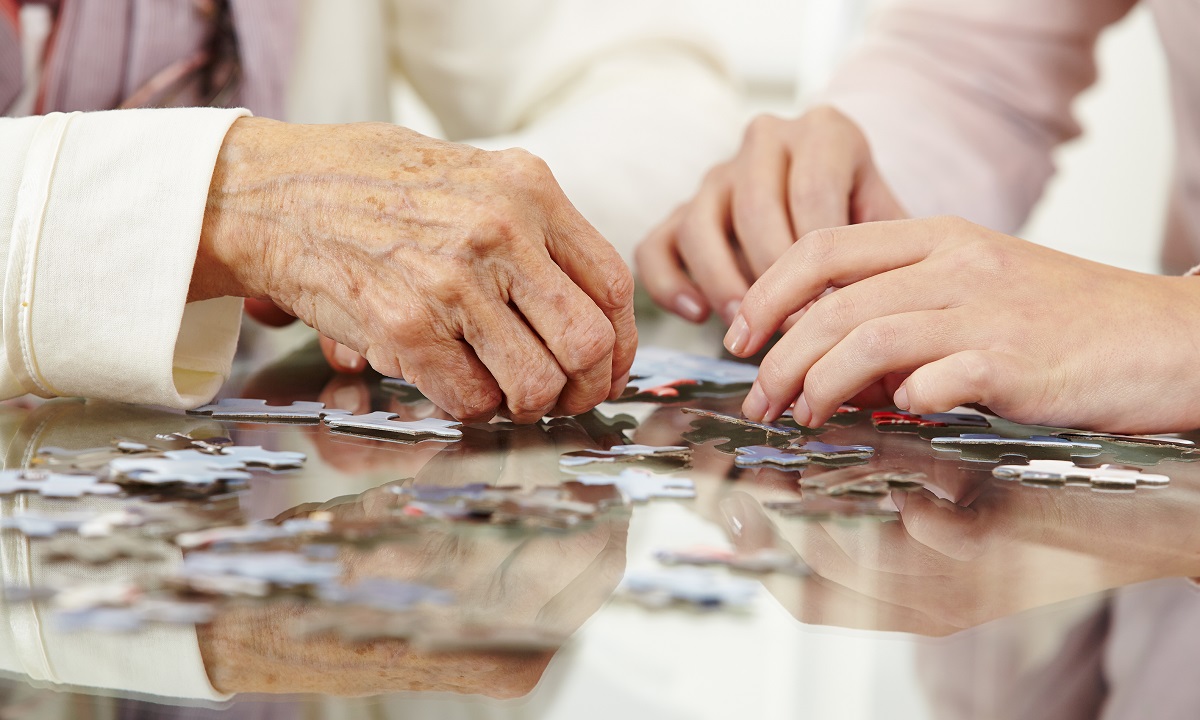There are many positives to growing older, but you’d be hard-pushed to include ache, pains and stiffness to the list. Whether it’s a rigid muscle, a creaky join or an ache you just can’t shake, as the years roll by our bodies like to remind us that we’re all, in fact, only human.
People living with dementia experience the same slowing down that we all do, but when it comes to bodily stiffness and aches, there are even more factors to consider.
One of the most alarming factors to take into account is that due to the decline in the brain’s usual functions, your loved one could be less able to tell you whether they’re suffering from pain, how bad it is, and where it’s coming from. And worryingly, chronic pains left untreated for long periods, can have a profoundly detrimental effect on quality of life.
Do people with dementia feel pain the same way?
There was a period in which medical practitioners presumed that due to the damage dementia-related diseases caused to the parts of the brain, people living with dementia might not feel pain in the same way they once did. Many studies carried out since, have proven this to be false.
Conditions such as arthritis and osteoporosis, and even conditions like gout, are all musculoskeletal conditions that people with dementia can suffer with. Yet, sometimes, due to an inability to communicate the symptoms, they can go undetected.
Does dementia lead to more aches and stiffness?
Alongside the general stiffness that can arise in our bodies as we age, some people living with dementia can also experience aches and stiffness as a result of the illness itself. These include:
Rigidity – Often with Lewy Body (LB) dementia, you may notice that a person exhibits symptoms that resemble Parkinson’s, including stiffness in the muscles, and slower movements.
Stiff-person syndrome – This is named after the way the syndrome causes someone’s muscles to spasm, leaving them stiff and impaired in their movement. While it’s incredibly rare, there have been cases reported of people with dementia displaying stiff-person symptoms as their dementia progresses. The effects of this syndrome can be very distressing for both the person suffering from it, and their family to witness.
Poor mobility – Due to a lack of movement – perhaps your loved one is no longer able to leave the house, or move about the room – you may find that even younger people with advanced dementia appear frailer, or have more painful joints.
How to tell if someone with dementia has aches and stiffness?
Use a face chart – While gauging their pain against a 1-10 number chart may be too challenging in the later stages of dementia, some carers have experienced positive responses from using an illustrated emotion board. Displaying several faces with varying emotions, from distressed through to happy, you can ask your loved one to point at the corresponding face to match their pain level.
Look for changes in behaviour – Is the person you’re caring for showing some out of character behaviour, agitation and generally seeming more unsettled? Do they shuffle more, have trouble raising their arms to put on a jumper? If they’re experiencing mid to late-stage dementia and have trouble communicating, it could be that aches or stiffness are to blame, and they’re not able to tell you about it.
Check out the Abbey Pain Assessment – This is a resource created by specialists to help you assess the extent of pain in someone who is limited in their communication. It can help identify the cause of pain, where it’s coming from and what makes it better. It’s also a great resource to share with doctors or nurses, especially if you think medication needs to be prescribed.
What happens if the aches and stiffness go unnoticed?
Persistent aches and stiffness of limbs not correctly diagnosed can lead to reduced mobility, as well as potentially playing a dangerous role in other serious injuries such as trips and falls. Failure to recognise chronic joint and general stiffness can become a daily torment for people living with dementia, and can deeply affect their ability to think and function.
Ways to ease aches and stiffness in people with dementia
Beyond medical pain management, if you suspect your loved one is in discomfort, it may be helpful to use the following non-pharmaceutical pain prevention methods:
- Get moving – The less we move, the more seized up our limbs and joints become, and the weaker our muscles get. Mobility is also a way to keep someone’s spirits lifted and their independence for longer. Explain clearly, and always make sure the person is willing to partake in exercise. Forcing someone with dementia to do something they don’t want to do can be counterintuitive.
- Get flowing – If movement is limited, try getting the blood flowing around the body by encouraging smaller exercises in the feet and hands, helping the healthy oxygenation of body.
- Massage – Again, if movement is restricted, or even if it’s not, a calming massage to problem areas prone to carrying stress and tension can be hugely beneficial. You can learn some basic massage techniques online. What’s more, there’s a small amount of evidence that using massage as part of a daily routine can help people living with dementia to feel less anxious and agitated.
- Heat pads – Depending on where the pain is coming from, it could be comforting to place a heat pad on the area, helping warm aching areas and release tension. Always make sure they’re not too hot, especially if your loved one is unable to tell you so.
- Acupuncture – When treating chronic musculoskeletal pain conditions such as back, neck or knee pain, the British Medical Acupuncture Society (BMAS), found that around 50 per cent of people feel significant relief through using the method. If you think that your loved one could benefit from the effects of acupuncture, explain the process as clearly as possible, and make doubly sure that the idea of needles won’t distress them.
A note on speaking up as a family member…
You may be reticent to bother a health practitioner about a suspected pain, ache or stiffness in your loved one. But, close friends and family members can make a huge impact on someone’s wellbeing by recognising signs of pain and reporting it to someone who may be able to help.
Related article: How does dementia affect mobility?
SHARE
Explore more



